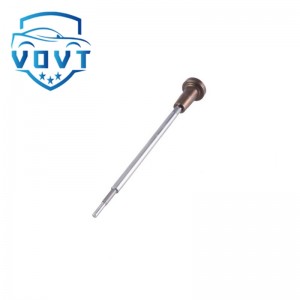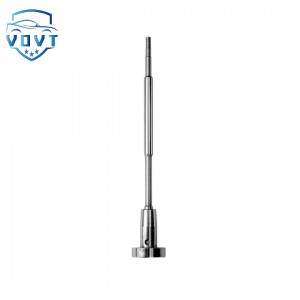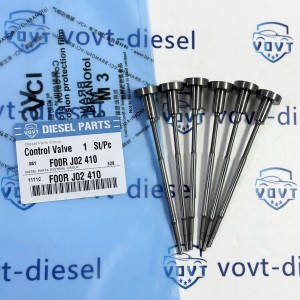High Precision New Diesel Injector Control Valve F00RJ02386 Valve Assembly for Fuel Injector Engine Spare Parts
Products Description
| Reference Codes | F00RJ02386 |
| Application | / |
| MOQ | 6 PCS |
| Certification | ISO9001 |
| Place of Origin | China |
| Packaging | Neutral packing |
| Quality Control | 100% tested before shipment |
| Lead time | 7~10 working days |
| Payment | T/T, L/C, Paypal, Western Union, MoneyGram or as your requirement |
Wear Behavior of Valve Assembly Friction Pairs and Optimization Design of Anti-Wear Coatings
Abstract
The valve assembly is a vital component in high-pressure fuel injection and hydraulic systems, where the friction pairs—typically consisting of the valve spool and valve seat—are subjected to severe working conditions such as high frequency, high pressure, and poor lubrication. These extreme conditions lead to wear, surface fatigue, and leakage, which significantly affect the precision, stability, and lifespan of the valve system. This study investigates the wear mechanisms of valve assembly friction pairs and proposes an optimization design for anti-wear coatings to improve their durability and tribological performance.
A combined experimental and simulation approach is employed to analyze the wear behavior. Using a high-frequency reciprocating wear tester, the effects of load, sliding speed, and temperature on wear rate and friction coefficient were systematically studied. The worn surfaces were characterized using SEM, EDS, and 3D profilometry to identify wear morphology and mechanisms. Results show that adhesive wear dominates under moderate load, while abrasive and fatigue wear become significant under high-load and high-pressure conditions. The presence of fuel impurities further accelerates micro-abrasion and surface pitting.
To enhance wear resistance, several anti-wear coating systems—including CrN, DLC (diamond-like carbon), and AlCrSiN—were deposited on valve components using PVD technology. Mechanical and tribological tests revealed that the DLC coating exhibited the lowest friction coefficient (0.12) and minimal wear depth due to its high hardness and excellent chemical inertness. However, AlCrSiN coatings demonstrated superior performance at elevated temperatures owing to their oxidation resistance and strong adhesion. Finite element simulations of contact stress and temperature distribution confirmed that optimized coating thickness (1.5–2.0 μm) and substrate hardness matching are critical for balancing stress concentration and coating delamination.
The results indicate that coating design tailored to the operating environment—combining high hardness, thermal stability, and low surface energy—can effectively reduce wear rate by more than 60%, thus improving valve reliability and service life. This research provides valuable insights for surface engineering and optimization of high-performance valve assemblies used in automotive, aerospace, and precision hydraulic systems.
Keywords: valve assembly, friction pair, wear mechanism, anti-wear coating, tribology, surface optimization























